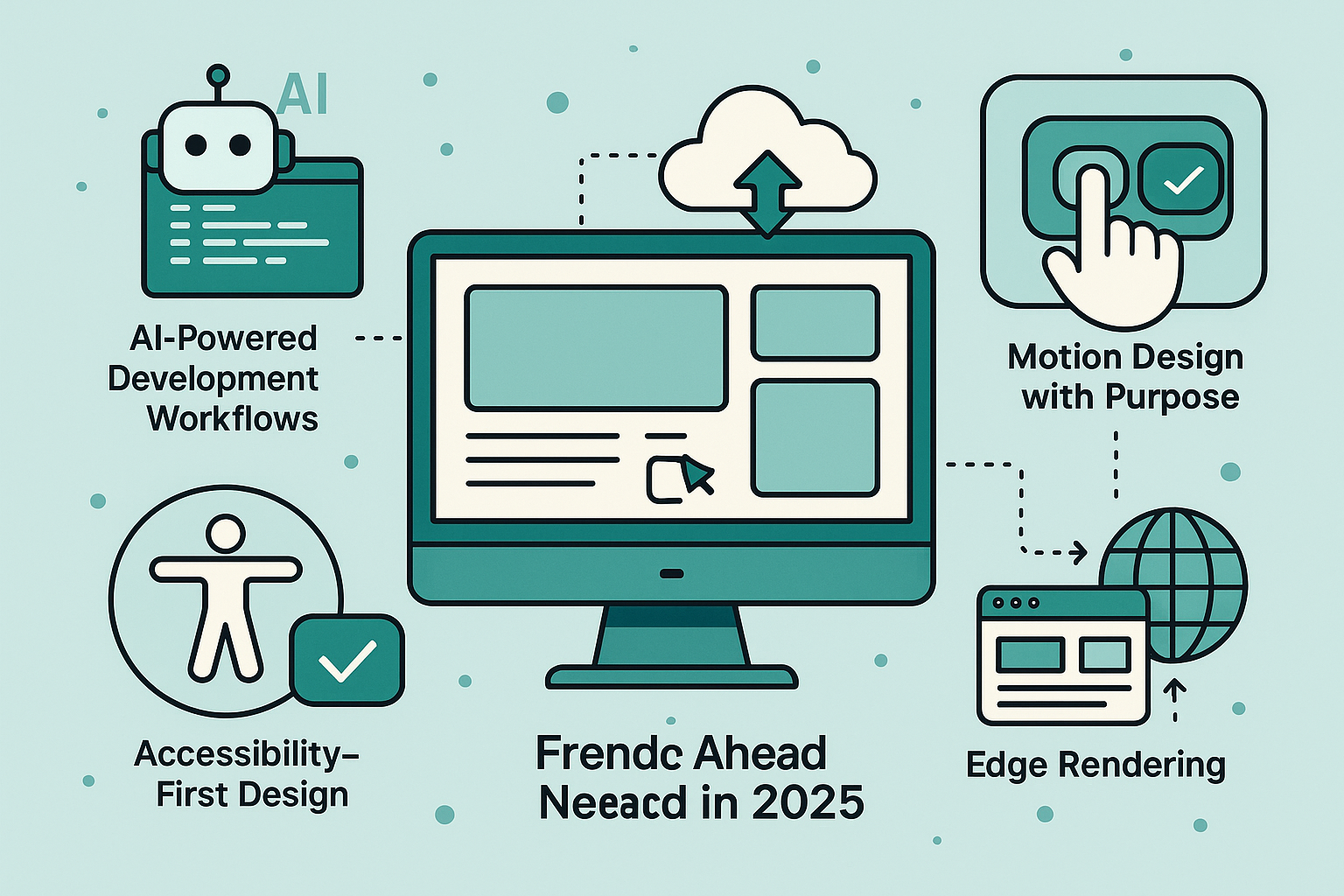Frontend Development Trends
A few years back, I was working with a startup that insisted their website “look modern.” We used the hottest design library of the time, added smooth animations, and shipped it. Six months later, bounce rates were through the roof. The site looked great but it loaded like a snail and was a nightmare on mobile. That’s when it clicked: trends aren’t just about looking flashy. They’re about solving real user problems.
Here’s the thing: 2025 isn’t about chasing the shiniest JavaScript framework or adding more animations. It’s about speed, accessibility, and adaptability making sure your frontend doesn’t just look good but works well for every user.
The Big Picture: Why Frontend Trends Matter
Trends in frontend development shape how users experience the web. Ignore them, and you risk building something outdated before it even launches. Follow them blindly, and you risk overengineering. The goal is balance knowing what’s worth adopting and what’s just hype.
1. AI-Powered Development Workflows
AI isn’t replacing frontend developers it’s becoming their sidekick. From AI-assisted coding in VS Code to automated UI testing, AI is streamlining repetitive tasks.
Tip: Use AI for scaffolding repetitive code or generating test cases, but keep human oversight for UX decisions.
Common Mistake: Copy-pasting AI code without understanding it. This leads to bugs you can’t explain or fix later.
Framework to Apply:
- Use AI for prototyping (UI ideas, basic layouts)
- Human review for logic and UX
- Automate testing and linting with AI tools
Visual Suggestion:
- Image: Screenshot of AI-assisted code suggestions in an editor.
- Alt text: VS Code editor showing AI-powered code completion for frontend layout.
2. Server Components and Streaming in React
React Server Components (RSC) and streaming are reshaping how we handle rendering. Instead of waiting for the full bundle, content streams in as it’s ready faster perceived load times.
Tip: Pair RSC with edge rendering for optimal performance.
Myth: “Server components mean no more client-side rendering.” Not true you’ll still mix both.
Checklist for Adoption:
- Update to the latest React version
- Refactor components for partial server rendering
- Test on real network throttling scenarios
Visual Suggestion:
- Image: Diagram showing server components rendering parts of a page before others load.
- Alt text: Flow chart comparing traditional React rendering with server streaming.
3. Motion Design with Purpose
Microinteractions and subtle animations can guide users, but 2025 is about using them intentionally. Overuse slows performance and distracts users.
Tip: Test animations on low-power devices to ensure smoothness.
Common Mistake: Using large animation libraries for small effects this bloats your bundle unnecessarily.
Framework to Apply:
- Animation must communicate (state changes, feedback)
- Keep it under 300ms for responsiveness
- Use CSS over JS where possible for performance
Visual Suggestion:
- Image: Side-by-side comparison of a UI with functional microinteractions vs. excessive animations.
- Alt text: UI buttons showing helpful hover feedback vs. distracting long animations.
4. Accessibility-First Design
With stricter regulations and wider awareness, accessibility is no longer optional. Screen reader support, proper contrast ratios, and keyboard navigation are baseline requirements.
Tip: Run automated audits with Lighthouse, then do manual keyboard and screen reader tests.
Myth: “Accessibility is just for disabled users.” In reality, it improves UX for everyone.
Checklist for Compliance:
- Use semantic HTML
- Test with screen readers like NVDA or VoiceOver
- Ensure color contrast meets WCAG AA
5. Edge Rendering and CDN-Driven Performance
With frameworks like Next.js and Remix embracing edge rendering, your frontend can be served faster from geographically close servers.
Tip: Use edge rendering for dynamic content to reduce TTFB (Time to First Byte).
Common Mistake: Deploying globally without testing localization fast load times mean little if your content isn’t region-aware.
6. Component-Driven Design Systems
Teams are moving toward fully componentized design systems with tools like Storybook and Figma integration.
Tip: Maintain a single source of truth for both design and code.
Myth: “A design system limits creativity.” In reality, it frees teams to focus on solving problems instead of reinventing UI patterns.
7. Low-Code & No-Code Integrations
Frontend devs are increasingly embedding low-code solutions for admin dashboards, marketing pages, and forms.
Tip: Use low-code tools for non-core features to free up dev time for high-value work.
Common Mistake: Relying entirely on no-code platforms for complex, highly-customized products.
Wrapping It Up: Staying Ahead Without Burning Out
The future of frontend in 2025 is a blend of speed, intelligence, and empathy. You don’t have to adopt every trend pick the ones that genuinely enhance user experience and developer efficiency.
Next Step:
If you want a monthly breakdown of actionable frontend updates and practical tutorials, subscribe to my newsletter. Stay ahead without the noise.



